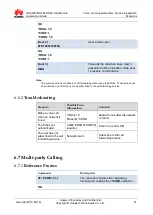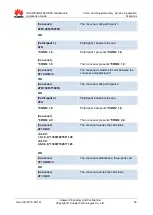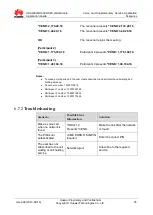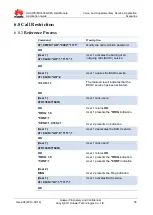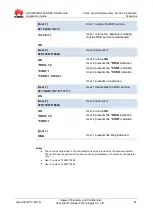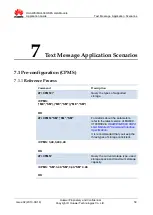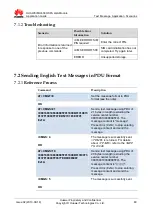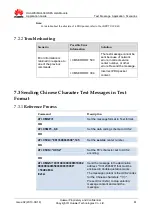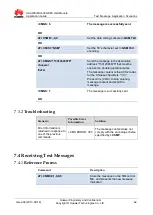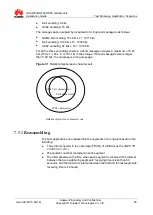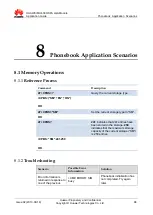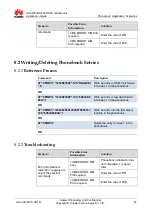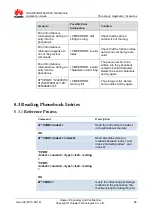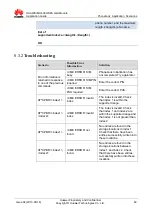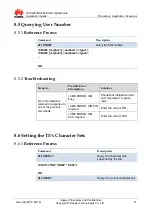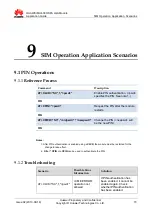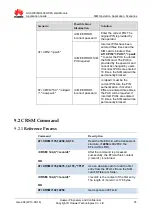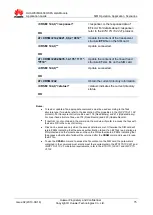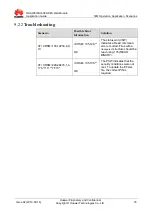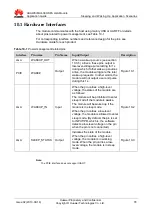
HUAWEI MU609 HSPA LGA Module
Application Guide
Text Message Application Scenarios
Issue 02 (2013-09-18)
Huawei Proprietary and Confidential
Copyright © Huawei Technologies Co., Ltd.
64
AT+CMGD=1,4
Delete all the messages in the current
storage.
OK
7.4.2
Troubleshooting
Scenario
Possible Error
Information
Solution
Error information is returned
in response to one of the
previous commands.
ERROR
In Text mode, run
AT+CMGL=4
(number), or in
PDU mode, run
AT+CMGL="ALL"
(string),
and ERROR is returned.
+CMS ERROR: 500
During SIM card initialization,
run
AT+CMGL
or
AT+CMGD
to read or delete a message,
and an error is returned.
7.5 Segmenting and Reassembling Long Text Messages
7.5.1
Segmenting
In PDU mode, text messages can be encoded using GSM 7-bit, 8-bit or UCS2. The
GSM 7-bit encoding scheme is used to encode common ASCII characters,
compressing every 8 characters into 7 characters. The 8-bit encoding scheme is
usually used to encode data such as pictures and ringtones. The UCS2 encoding
scheme is used to encode Unicode characters. According to the existing 3GPP
protocols, the size of the user data contained a PDU is 140 bytes. Therefore, the
maximum number of characters contained in a single message is 160, 140 and 70 for
the GSM 7-bit, 8-bit, and UCS2 encoding schemes respectively. If the number of
characters contained in a text message exceeds the maximum number, the message
will be segmented into several messages. An English letter, a Chinese character, or a
byte of data is considered as a character.
According to the existing 3GPP protocols, after a long text message is segmented,
the number of characters that each message segment can contain is as follows:
GSM 7-bit encoding: 153 characters
8-bit encoding: 134 characters
UCS2 encoding: 67 characters
The number of available characters per segment is lower, because each segment
must contain segmentation information.
The storage space occupied by a character is as follows:
GSM 7-bit encoding: 7 bits


